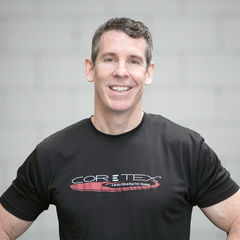Pain is a very personal and subjective experience. Modern pain science no longer views pain as a sensation; rather, pain is viewed as an experience that results from an amalgamation of inputs that are physical, psychological, emotional and social. These inputs must be viewed interdependently, because they all directly affect one another and the overall pain experience.
The Bio-psycho-social Model of Pain
Researchers and clinicians have structured the bio-psycho-social (BPS) model of modern pain to better understand and treat chronic pain.
“Bio” represents biology, biomedical and/or biomechanical. This is the historical way chronic pain was treated—seeking disease, dysfunction or damage and then designing interventions that would address it.
“Pyscho” represents the current psychological characteristics of the chronic pain sufferer. This could include the individual’s beliefs about his or her situation, historical references related to past pain experiences, anxiety, depression and expectations about the future. Many of the psychological elements are influenced by family members and/or perceived experts or authorities (e.g., doctors, nurses, physical therapists and personal trainers).
“Social” represents the social implications of the pain experience. Social stressors relate to doubts that those around us don’t believe our pain is real and whether there is a social support structure in place. Additional stressors may be related to missing important social events, traveling or the inability to maintain employment or familial responsibilities.
The International Association for the Study of Pain defines pain “as an unpleasant and emotional experience associated with actual or potential tissue damage, or described in terms of such damage.” The word “potential” is significant in this definition because it describes pain even in the absence of tissue damage.
In a 2018 paper, the Centers for Disease Control and Prevention (CDC) noted that 50 million Americans suffer from chronic pain and 20 million suffer from high-impact chronic pain. High-impact chronic pain is chronic pain that “frequently limits life or work activities,” according to the report.
As a health and exercise professional, the likelihood of working with clients who have chronic and/or recurrent pain is high. These are clients who have been cleared for exercise by their physicians and who have either completed or are currently involved with treatment by a licensed medical provider such as a physical therapist or chiropractor. Understanding evidence-based strategies for exercise and maintaining professional scope of practice provide an important service to this population. Exercise programming to reduce mechanical stress and improve movement confidence and function are well within our professional role. But at no time should a health and exercise professional attempt to treat or diagnose any condition or provide medical advice.
The growing body of evidence around pain is reshaping treatment approaches by medical professionals. As a health and exercise professional who will very likely work with clients experiencing chronic pain, understanding the bio-psycho-social paradigm and what it means in reference to program design, communication and expectations are paramount.
The Importance of Rapport
One of the most effective strategies for introducing physical activity to clients with chronic pain is to establish rapport, which in turn, may help relieve anxiety and fear and set expectations. Here are three strategies to get you started:
- First impressions are unavoidable. If your potential clients’ first impressions are that you have no understanding or empathy for their struggles, you are at a disadvantage. Many of these impressions will be nonverbal and immediately communicated by observing your attire, the environment and any observable interactions with other clients, members or staff. Dress professionally for your role. Find a quiet, “safe” environment to sit and speak with your clients/prospective clients to enhance privacy.
- Listen. Give your clients the opportunity to express their concerns and fears. Remember that many people with chronic pain have been rushed in and out of appointments and often do not feel as if they are being heard. Giving them this opportunity is significant. For example, one of my favorite and most impactful questions to ask a client before we begin our first session together is, “Is there anything that I haven’t asked that I should have asked?” This gives the client permission to share anything else that might be important or gives me permission to move to the next phase of the appointment.
- Validate. When it comes to starting an exercise program, arguably the greatest fear an individual with chronic pain will have is that it is going to make his or her pain worse. To validate your clients is to communicate that you understand that their pain is very real and that their concerns are understood. That is, you have to enter the client’s world. You have to understand a client’s challenges, frustrations and setbacks to be able to truly serve him or her.
Pain is a complex issue and it is neither helpful nor accurate to approach client communication and programming from an outdated paradigm. The current bio-psycho-social model contains elements of biology, psychology and sociology, of which all must be taken into account for lasting, pain-free movement.
Want to help your clients who have chronic or recurrent pain? Become an ACE Pain-Free Movement Specialist, and understand how pain affects movement and how to help people move without pain.




 by
by 




 by
by